
Succulent Resilience: Regrowth After Cutting or Damage

Succulents are a diverse group of plants known for their ability to store water in their leaves, stems, and roots. These plants have adapted to survive in arid environments, making them highly resilient and able to withstand harsh conditions. One fascinating aspect of succulents is their ability to regrow and recover after being cut or damaged. This remarkable resilience has made succulents popular among gardeners and plant enthusiasts.
We will explore the incredible regrowth abilities of succulents. We will delve into the science behind their ability to regenerate and understand the factors that contribute to their resilience. Additionally, we will discuss different methods of cutting and propagating succulents to encourage healthy regrowth. Whether you are a seasoned gardener or a succulent enthusiast, this article will provide valuable insights into the fascinating world of succulent resilience.
- Succulents can regrow from cuttings taken from healthy plants
- When a succulent is damaged or broken, it can often heal and regrow
- Many succulents have the ability to produce new growth from their stems or leaves
- Proper care and conditions can promote regrowth in damaged succulents
- Pruning a succulent can encourage it to grow back fuller and healthier
- Some succulents have the ability to regenerate from just a single leaf
- With time and patience, a damaged succulent can recover and thrive again
- Providing the right amount of sunlight, water, and nutrients can support regrowth in succulents
- Taking proper precautions when handling or moving succulents can prevent damage and promote their resilience
- Regularly removing dead or damaged parts of a succulent can stimulate new growth
- Frequently Asked Questions
Succulents can regrow from cuttings taken from healthy plants
One of the most fascinating aspects of succulents is their remarkable ability to regrow from cuttings taken from healthy plants. This means that even if you accidentally damage or prune your succulent, there is a good chance that it will bounce back and continue to thrive.
How does regrowth occur?
When a succulent is cut or damaged, it triggers a natural response known as vegetative propagation. This process allows the plant to produce new roots and shoots from the remaining stem or leaf. Succulents have the unique ability to store water in their leaves, stems, and roots, which enables them to survive in dry and arid conditions. This stored moisture also plays a crucial role in their regrowth process.
Steps to regrow succulents from cuttings:
- Select a healthy parent plant: Choose a succulent that is healthy, with no signs of disease or pest infestation. This ensures that the cutting will have the best chance of successful regrowth.
- Prepare the cutting: Using a clean and sharp pair of scissors or gardening shears, carefully cut a leaf or stem from the parent plant. Ensure that the cutting is at least a couple of inches long to provide enough material for regrowth.
- Allow the cutting to dry: Place the cutting in a dry and shaded area, away from direct sunlight. Allowing the cutting to dry for a few days will help to prevent rot and improve the chances of successful regrowth.
- Plant the cutting: Once the cutting has dried, prepare a well-draining potting mix suitable for succulents. Gently insert the cutting into the soil, ensuring that the end with the cut is inserted at least an inch into the soil. Keep the soil lightly moist and avoid overwatering.
- Provide the right conditions: Place the newly planted cutting in a bright location with indirect sunlight. Succulents prefer warm temperatures and good airflow, so ensure that the environment is conducive to their growth.
- Be patient and watch for regrowth: Succulents typically take a few weeks to several months to establish roots and begin producing new growth. Monitor the cutting closely and adjust the watering schedule if needed.
Other methods of regrowth:
 Can You Propagate Succulents by Growing New Plants from Leaves?
Can You Propagate Succulents by Growing New Plants from Leaves?In addition to regrowing succulents from cuttings, it is also possible to propagate them from leaves or offsets. Leaves can be gently removed from the parent plant and laid on top of well-draining soil until new roots and shoots appear. Offsets, also known as pups, are small plantlets that grow from the base of mature succulents. These can be carefully separated and replanted to create new plants.
Conclusion:
Succulents possess a remarkable resilience that allows them to regrow and thrive even after being cut or damaged. By understanding the regrowth process and following the proper techniques, you can successfully propagate new succulents and expand your collection. So, don't be afraid to experiment and enjoy the process of witnessing the resilience of these incredible plants.
When a succulent is damaged or broken, it can often heal and regrow
One of the remarkable features of succulents is their incredible resilience. These hardy plants have the ability to regenerate and grow even after they have been cut or damaged. If you accidentally break a succulent stem or the plant experiences any form of harm, don't worry! With proper care and a little patience, your succulent will likely bounce back and thrive.
1. Propagation through Leaf Cuttings
Succulents have a unique ability to propagate through leaf cuttings. If a leaf is accidentally detached from the plant, it can be utilized to grow a new succulent. To do this, gently remove the leaf from the stem, making sure to keep the leaf intact. Allow the leaf to dry for a few days until it forms a callus, then place it on top of well-draining soil. Keep the soil slightly moist and provide indirect sunlight. Over time, new roots will emerge, and a baby succulent will start to grow.
2. Stem Propagation
If the stem of your succulent gets damaged, you can also propagate it to create a new plant. Cut the damaged section of the stem just below a node, which is where leaves emerge. Allow the cut end to dry for a few days to prevent rotting, then place it in well-draining soil. Keep the soil slightly moist and provide indirect sunlight. The stem will develop roots, and a new succulent will start to form.
 Propagating Succulents: A Guide to Using Aerial Roots for Growth
Propagating Succulents: A Guide to Using Aerial Roots for Growth3. Regrowth from the Base
In some cases, when a succulent experiences severe damage, it may lose its above-ground parts entirely. However, don't lose hope! Many succulents have the ability to regrow from their base. Even if the plant appears completely bare, continue to provide it with proper care. Water the base sparingly, ensuring the soil doesn't become waterlogged, and provide ample sunlight. With time, you will notice new growth emerging from the base, and your succulent will once again flourish.
4. Patience is Key
While succulents are known for their resilience, it's important to remember that regrowth takes time. It may take several weeks or even months for new growth to appear. Be patient and continue to provide the necessary care and conditions for your succulent's recovery. With time, you will be rewarded with the sight of new leaves, stems, and even flowers.
Remember, each succulent species may have slightly different regrowth patterns, so it's essential to research the specific needs of your plant. By understanding how succulents regenerate and providing them with the right care, you can witness their incredible resilience firsthand.
Many succulents have the ability to produce new growth from their stems or leaves
Succulents are known for their unique ability to store water in their leaves and stems, making them incredibly resilient and adaptable plants. One fascinating characteristic of succulents is their ability to regrow and produce new growth even after being cut or damaged.
Regrowth from stems
When a succulent's stem is cut or broken, it has the remarkable ability to produce new growth from the remaining stem or even from the cut end. This regrowth process is known as "propagation" and can be done by either planting the cut stem directly into soil or by allowing it to callus before planting.
- Planting the cut stem directly into soil: By removing any lower leaves from the stem, you can create a bare section that is suitable for planting. Place the cut end of the stem into well-draining soil, making sure it is securely rooted. Keep the soil slightly moist and provide indirect sunlight. Over time, new roots will develop, and fresh growth will emerge from the top of the stem.
- Allowing the cut stem to callus before planting: Some succulent enthusiasts prefer to let the cut end of the stem dry and callus before planting it. This process reduces the risk of rotting and promotes successful rooting. Once the cut end is calloused, it can be planted in well-draining soil and treated as described above.
Regrowth from leaves
 Water Propagation: A Guide for Succulent Plants
Water Propagation: A Guide for Succulent PlantsNot only can succulents regrow from their stems, but they can also produce new growth from individual leaves. This method of propagation is particularly common for certain types of succulents, such as Echeveria or Sedum.
- Select a healthy leaf: Choose a mature and healthy leaf from the succulent. Gently twist or cut the leaf from the stem, ensuring the entire leaf is intact.
- Allow the leaf to callus: Place the detached leaf in a dry location and allow it to callus for a few days. This step helps prevent rotting and promotes successful rooting.
- Plant the leaf: Once the leaf has calloused, place it on top of well-draining soil, ensuring that the calloused end is in contact with the soil. Do not bury the leaf entirely; it should sit on the surface.
- Provide proper care: Water the leaf lightly, making sure the soil is moist but not soggy. Place the planted leaf in a location with bright, indirect sunlight. Over time, roots will develop from the calloused end, and a small rosette or new growth will emerge from the top of the leaf.
Note: It is important to remember that not all succulents have the same regrowth abilities. Some species may be more resilient and prone to regrowth, while others may have limited or no regrowth potential. Additionally, proper care, including well-draining soil, adequate sunlight, and appropriate watering, is essential for successful regrowth.
By understanding and harnessing the regrowth potential of succulents, you can explore various propagation techniques and expand your collection of these fascinating and resilient plants.
Proper care and conditions can promote regrowth in damaged succulents
One of the fascinating aspects of succulents is their remarkable ability to regenerate and bounce back even after being cut or damaged. These resilient plants have developed various mechanisms to survive in harsh environments, and their regrowth capabilities are nothing short of extraordinary.
When a succulent is cut or damaged, it activates its natural defense mechanisms to heal itself and initiate new growth. However, as a responsible plant owner, it is essential to provide the right care and conditions to support the regrowth process.
1. Clean and sanitize
Before you can start aiding the regrowth of your damaged succulent, it's crucial to clean and sanitize any tools you plan to use. This step helps prevent the introduction of pathogens or diseases that could hinder the healing process. A simple solution of water and mild soap or rubbing alcohol can effectively disinfect your tools.
 Growing Succulent Seeds at Home: A Step-by-Step Guide
Growing Succulent Seeds at Home: A Step-by-Step Guide2. Allow time for callus formation
After the initial damage, it's important to give your succulent enough time to form a callus over the wound. This callus acts as a protective layer, preventing infections and providing a foundation for new growth. Depending on the severity of the damage, the callus formation can take anywhere from a few days to a few weeks.
3. Provide optimal lighting
Proper lighting is crucial for the regrowth of succulents. Most succulents thrive in bright, indirect sunlight. Placing your damaged plant in a location with adequate light will stimulate photosynthesis and promote healthy regrowth. However, be cautious not to expose the succulent to intense, direct sunlight immediately after damage, as it may further stress the plant.
4. Ensure proper watering
While succulents are known for their ability to tolerate drought conditions, they still require some water for regrowth. It's important to strike a balance and avoid overwatering, as excessive moisture can lead to root rot or other issues. Stick to a watering schedule that allows the soil to dry out between waterings, ensuring the succulent receives the necessary hydration without causing harm.
5. Apply a rooting hormone (if needed)
In some cases, applying a rooting hormone to the cut or damaged area can expedite the regrowth process. Rooting hormones contain growth-promoting substances that encourage the development of new roots. However, not all succulents require this treatment, so it's essential to research and determine if your specific plant will benefit from it.
By following these guidelines and providing the proper care and conditions, you can greatly enhance the regrowth potential of your damaged succulent. Witnessing the resilience and beauty of a succulent as it rejuvenates itself is truly a rewarding experience for any plant enthusiast.
Pruning a succulent can encourage it to grow back fuller and healthier
When it comes to succulents, pruning is not just about maintaining their shape or size. It can actually promote new growth and make them even more resilient. If you have a succulent that has become leggy or has suffered damage, cutting it back can stimulate regrowth and help it thrive.
 How to Propagate a Rock Succulent by Splitting: Step-by-Step Guide
How to Propagate a Rock Succulent by Splitting: Step-by-Step GuideWhy is pruning important for succulents?
Pruning a succulent serves multiple purposes. Firstly, it helps to remove any dead or diseased parts of the plant, improving its overall health. Secondly, it can help control the size and shape of the succulent, especially if it has become too tall or has a lot of sparse growth. Finally, pruning encourages the succulent to produce more compact and vibrant foliage.
How to prune a succulent:
1. Start by inspecting the succulent for any dead or damaged leaves or stems. These should be removed first, using a clean pair of scissors or pruning shears.
2. Look for areas where the succulent has become leggy or stretched out. These sections can be cut back to promote new growth. Make sure to cut just above a leaf node or a joint, as this is where the new growth will emerge.
3. If you want to control the size of the succulent, you can also prune the top part of the plant. This will encourage branching and a more compact growth habit.
Tips for successful regrowth:
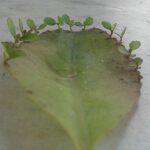 Can I Easily Propagate Succulents by Leaf Propagation?
Can I Easily Propagate Succulents by Leaf Propagation?1. Allow the cut ends of the succulent to dry for a day or two before replanting them. This helps to prevent rotting.
2. Once the cuttings have dried, they can be planted in well-draining soil. It's important not to overwater them initially, as this can hinder root development.
3. Place the newly pruned succulent in a bright area with indirect sunlight. This will provide the ideal conditions for regrowth.
Patience is key:
It's important to remember that succulents are slow-growing plants, and regrowth after pruning may take some time. Be patient and provide the necessary care, and you will soon see new shoots emerging from the pruned areas.
Pruning a succulent can have multiple benefits. It helps to remove dead or damaged parts, control the size and shape, and encourage new growth. By following the proper pruning techniques and providing the right conditions, you can ensure that your succulent not only survives but thrives after being cut or damaged.
Some succulents have the ability to regenerate from just a single leaf
Succulents are known for their remarkable ability to bounce back from damage and regrow even after being cut or injured. In fact, some succulents can regenerate from just a single leaf, making them incredibly resilient plants.
 Water Propagation of Succulents: A Comprehensive Guide
Water Propagation of Succulents: A Comprehensive GuideWhen a succulent leaf is cut or damaged, it triggers a process called propagation, which is the ability of a plant to reproduce and create new individuals. This process is facilitated by the presence of specialized cells within the succulent's leaves, stems, or roots.
These cells, known as meristematic cells, are responsible for the growth and development of new tissue. When a succulent leaf is damaged, these meristematic cells become activated and start dividing rapidly, forming a cluster of cells known as a callus.
Over time, the callus differentiates and gives rise to new roots, stems, and eventually leaves. This regrowth process can take anywhere from a few weeks to several months, depending on the species of succulent and the environmental conditions.
It's important to note that not all succulents have the same regenerative capabilities. Some species are more adept at regrowing from cuttings or damaged leaves, while others may struggle to recover. Additionally, factors such as proper care, light, and moisture levels play a crucial role in the success of the regrowth process.
Propagating succulents from cuttings
One popular method of propagating succulents is through leaf or stem cuttings. This involves carefully removing a leaf or a section of stem from the parent plant and allowing it to develop new roots and grow into a new individual.
To propagate succulents from leaf cuttings, start by selecting a healthy, mature leaf from the parent plant. Gently twist or cut the leaf from the stem, making sure to include the entire leaf blade. Allow the cut end of the leaf to dry out for a few days to prevent rotting.
Once the cut end has calloused over, place the leaf on top of well-draining soil or a succulent propagation mix. Mist the soil lightly to provide moisture without saturating it. Over time, the leaf will send out roots and eventually develop a new rosette of leaves.
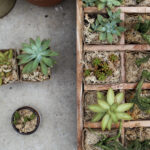 Dormancy in Succulents: A Guide to Varieties and Timing
Dormancy in Succulents: A Guide to Varieties and TimingStem cuttings follow a similar process. Choose a healthy stem and carefully remove a section, making sure it has at least a few nodes. Allow the cut end to dry and callous before inserting it into the soil. Keep the soil lightly moist and provide bright, indirect light to encourage root development.
Succulents are truly remarkable plants that possess a unique ability to regenerate and thrive even after being cut or damaged. Their resilience is a testament to their adaptability and survival strategies in challenging environments.
Whether you're a seasoned succulent enthusiast or just starting your collection, understanding the regrowth process can deepen your appreciation for these fascinating plants. So next time you accidentally break a succulent leaf or need to propagate new individuals, remember that with a little care and patience, your succulent will likely bounce back and continue to flourish.
With time and patience, a damaged succulent can recover and thrive again
Succulents are known for their resilience and ability to withstand harsh conditions. Whether they have been accidentally damaged or intentionally cut, these hardy plants have the remarkable ability to regrow and bounce back with a little time and care.
Understanding Succulent Resilience
One of the main reasons why succulents are so resilient is their unique ability to store water in their leaves and stems. This adaptation allows them to survive in arid environments and also aids in their regrowth after being damaged.
When a succulent is cut or damaged, its stored water reserves become essential. The plant will redirect these reserves to the damaged area, promoting healing and regrowth. This process, combined with the plant's natural growth mechanisms, allows it to recover from various types of damage.
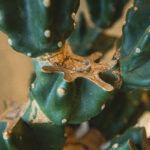 Can Succulent Cuttings Be Planted Directly in Soil?
Can Succulent Cuttings Be Planted Directly in Soil?Steps to Promote Regrowth
If you find yourself with a damaged succulent, there are several steps you can take to promote regrowth and ensure its recovery:
- Assess the damage: Examine your succulent carefully to determine the extent of the damage. This will help you plan the appropriate course of action.
- Clean the wound: If the succulent has been cut, gently clean the wound with a sterilized knife or scissors to remove any dirt or debris. This will help prevent infection and promote faster healing.
- Allow the wound to callus: After cleaning the wound, it is important to let it dry and form a callus. This protective layer will help prevent moisture loss and reduce the risk of infection.
- Provide proper lighting and temperature: Place your damaged succulent in an area with adequate sunlight and maintain a stable temperature. This will support the plant's healing process and encourage regrowth.
- Water with care: While succulents can tolerate drought, it is crucial to provide them with enough water during their regrowth phase. However, be cautious not to overwater, as excessive moisture can lead to root rot.
- Be patient: Succulent regrowth takes time, so be patient and give your plant the necessary time to recover. Avoid the temptation to rush the process by over-caring or disturbing the plant unnecessarily.
Types of Succulent Damage
Succulents can experience different types of damage, including:
- Cutting: Accidental or intentional cutting can cause damage to the succulent's leaves, stems, or roots.
- Breakage: A succulent can break or snap when mishandled or subjected to excessive force.
- Rot: Overwatering or poor drainage can lead to root rot, impacting the plant's overall health and growth.
- Pests: Certain pests, such as mealybugs or aphids, can damage succulents by feeding on their sap or causing infections.
Regardless of the type of damage, by following the proper steps and providing the necessary care, your succulent can recover and thrive once again. Remember, resilience is one of their defining characteristics, making them a joy to care for and admire.
Providing the right amount of sunlight, water, and nutrients can support regrowth in succulents
Succulents are known for their resilience and ability to bounce back even after being cut or damaged. With proper care and attention, you can help your succulent plants regrow and thrive. One of the key factors in promoting regrowth is providing the right amount of sunlight, water, and nutrients.
Sunlight
When it comes to sunlight, succulents prefer bright but indirect light. Placing them near a sunny window or in a well-lit area of your home or garden is ideal. However, be cautious of exposing them to direct sunlight for extended periods, especially during the hottest parts of the day. Too much direct sunlight can cause sunburn and damage the leaves or stems of your succulents.
On the other hand, insufficient sunlight can lead to etiolation, where the succulent stretches and becomes weak and pale. To prevent this, make sure your succulents receive at least 4-6 hours of bright, indirect sunlight each day. If you're growing them indoors, consider using artificial grow lights to supplement natural light.
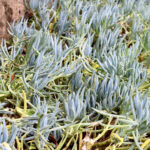 Propagation of Succulents: Cutting Techniques and Methods
Propagation of Succulents: Cutting Techniques and MethodsWater
Proper watering is crucial for the regrowth of succulents. These plants have adapted to survive in arid conditions and are highly efficient at storing water in their leaves and stems. Overwatering can be detrimental to their health, leading to root rot and other issues.
Instead, adopt a "soak and dry" watering method. Allow the soil to dry out completely between waterings and then thoroughly saturate it when you do water. This mimics the natural rainfall patterns in their native habitats. Additionally, avoid using a spray bottle or misting your succulents, as this can promote fungal diseases.
Nutrients
Succulents have minimal nutritional requirements compared to other plants. They thrive in well-draining soil that is not overly rich in nutrients. Fertilizing your succulents sparingly, about once a month during the growing season, with a diluted succulent fertilizer or a balanced fertilizer with a low nitrogen content, can provide the essential nutrients they need.
However, be cautious not to over-fertilize, as this can lead to excessive growth and weaker plants. Always follow the instructions on the fertilizer packaging and err on the side of caution.
By providing the right balance of sunlight, water, and nutrients, you can aid in the regrowth of your succulents after cutting or damage. Remember to monitor their needs closely and make adjustments as necessary to ensure their continued health and resilience.
Taking proper precautions when handling or moving succulents can prevent damage and promote their resilience
Succulents are known for their ability to withstand harsh conditions and bounce back from damage. Their resilience allows them to regrow even after being cut or injured. However, it is important to handle and move these plants with care to avoid unnecessary harm.
1. Use protective gloves
When handling succulents, especially those with sharp spines or thorns, it is advisable to wear protective gloves. This will protect your hands from potential injuries and prevent damage to the plants. The thick leaves and spines of succulents can easily penetrate the skin, causing discomfort and potential infections.
2. Use clean, sharp tools
If you decide to prune or cut your succulents, it is crucial to use clean and sharp tools. Dull or dirty tools can lead to jagged cuts, which may impede the plant's ability to regenerate new growth. Using clean and sharp tools reduces the risk of infection and promotes faster healing.
3. Allow the cuttings to callus
When you make a cutting from a succulent, it is important to let the cut end callus before planting it. Allowing the cut to callus forms a protective layer that prevents the cutting from rotting or developing diseases. Place the cuttings in a dry and well-ventilated area for a few days until a callus forms.
4. Provide proper lighting and watering
After cutting or damaging a succulent, it is essential to provide it with the right amount of light and water to aid in its regrowth. Succulents require bright but indirect sunlight to thrive. Avoid exposing them to direct sunlight immediately after cutting, as this can cause further stress to the plant. Additionally, water the succulent sparingly, allowing the soil to dry out between waterings to prevent root rot.
5. Be patient and observe
Regrowth after cutting or damage takes time, so it is important to be patient and observe the progress of your succulent. Some succulents may take weeks or even months to show signs of new growth. Keep an eye out for new shoots or leaves, indicating that the plant is recovering and regenerating. If you notice any signs of disease or pests, take immediate action to prevent further damage.
By taking these precautions and providing the necessary care, you can help your succulents recover and thrive after cutting or damage. Remember, their resilience is remarkable, and with proper attention, you can enjoy a flourishing succulent garden.
Regularly removing dead or damaged parts of a succulent can stimulate new growth
When it comes to succulents, their resilience and ability to bounce back from damage is truly remarkable. One of the fascinating things about these plants is their capacity to regrow and thrive even after being cut or experiencing damage. Regularly removing dead or damaged parts of a succulent can actually stimulate new growth and help the plant stay healthy.
Why should you remove dead or damaged parts?
Dead or damaged parts of a succulent not only look unsightly but can also become a breeding ground for pests and diseases. By removing these parts, you not only improve the overall appearance of the plant but also prevent any potential harm to the healthy parts of the succulent. Additionally, removing dead or damaged parts allows the plant to focus its energy on regrowth and rejuvenation.
How to properly remove dead or damaged parts?
When removing dead or damaged parts of a succulent, it is important to do it correctly to ensure the best chances of regrowth and minimize the risk of further damage. Here are a few steps to follow:
- Prepare your tools: Before you start, make sure you have a clean and sharp pair of pruning shears or scissors. This will help you make precise cuts without causing unnecessary harm to the plant.
- Identify the dead or damaged parts: Carefully examine your succulent and identify any parts that are brown, shriveled, or showing signs of disease or pest infestation. These are the parts that need to be removed.
- Make clean cuts: Position your pruning shears or scissors just above the healthy part of the succulent and make a clean cut. Avoid tearing or ripping the plant as this can lead to further damage.
- Dispose of the removed parts: After removing the dead or damaged parts, it is crucial to dispose of them properly. Do not compost them, as this can potentially spread diseases or pests.
Patience is key
After removing dead or damaged parts, it is important to give your succulent time to recover and regrow. Be patient and provide the plant with proper care, such as adequate sunlight, well-draining soil, and regular watering. With time, you will start to see new growth emerging from where you made the cuts, rejuvenating your succulent and showcasing its remarkable resilience.
Frequently Asked Questions
1. Can succulents regrow after being cut or damaged?
Yes, many succulents have the ability to regrow and recover after being cut or damaged.
2. How long does it take for a succulent to regrow after being cut?
The regrowth time of a succulent can vary depending on the type and extent of the damage, but it usually takes a few weeks to a few months.
3. What should I do to encourage regrowth in a damaged succulent?
Make sure the succulent is placed in a well-lit area, provide proper watering and drainage, and avoid overwatering or disturbing the damaged area.
4. Can I propagate a succulent using the cuttings from a damaged plant?
Yes, many succulents can be propagated from cuttings. Simply let the cut end of the succulent callus over for a few days, then plant it in well-draining soil and wait for new growth to appear.
If you want to read more articles similar to Succulent Resilience: Regrowth After Cutting or Damage, you can visit the Propagation category.





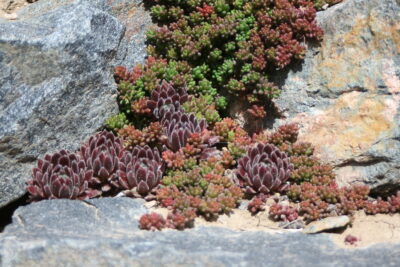
You Must Read